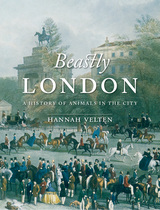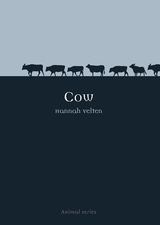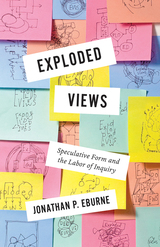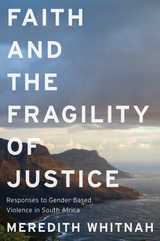
Velten travels back in history to describe a time when Londoners shared their homes with pets and livestock—along with a variety of other pests, vermin, and bedbugs; Londoners imported beasts from all corners of the globe for display in their homes, zoos, and parks; and ponies flying in hot air balloons and dancing fleas were considered entertainment. As she shows, London transformed from a city with a mainly exploitative relationship with animals to the birthplace of animal welfare societies and animal rights’ campaigns. Packed with over one hundred illustrations, Beastly London is a revealing look at how animals have been central to the city’s success.

From the milk we drink in the morning, to the leather shoes we slip on for the day, to the steak we savor at dinner, our daily lives are thoroughly bound up with cows. Yet there is a far more complex story behind this seemingly benign creature, which Hannah Velten explores here, plumbing the rich trove of myth, fact, and legend surrounding these familar animals.
From the plowing field to the rodeo to the temple, Velten tracks the constantly changing social relationship between man and cattle, beginning with the domestication of aurochs around 9000 BCE. From there, Cow launches into a fascinating story of religious fanaticism, scientific exploits, and the economic transformations engendered by the trade of the numerous products derived from the animal. She explores in engaging detail how despite cattle’s prominence at two ends of a wide spectrum: Hinduism venerates the cow as one of the most sacred members of the animal kingdom, while beef is a prized staple of the American diet. Thought provoking and informative, Cow restores this oft-overlooked animal to the nobility it richly deserves.

Milk—“It does a body good.” It’s difficult to deny the truth of the American Dairy Council’s former advertising campaign. From birth milk is the sustaining and essential food of all mammals. It is the first food we ever taste. And yet, despite that natural relationship to milk, the majority of the world’s population cannot digest it in the form most often available to adults—cow’s milk.
In Milk, Hannah Velten explores the myths and misconceptions surrounding the ubiquitous drink. Modern milk processing produces a safe, clean beverage that is very different from pure milk straight from the cow. Nonetheless, there are many advocates of raw milk that long for the days before pasteurization, homogenization, and standardization. Yet milk in the time before these scientific processes was even less natural than today—known then as the white poison, it was bacteria-ridden, mixed with additives to make it look like milk after the cream was removed, filled with chemicals to promote its shelf life, and extremely watered down.
Now that milk is considered a staple of a healthy and balanced diet, Velten investigates how and why conceptions of milk have shifted in the public consciousness, from the science of nutrition to the dairy industry’s advertising campaigns. This highly illustrated exploration of one of the most fundamental foods and drinks also includes recipes for ice-cream, milkshakes, and even milk paint. Milk will surprise and entertain in equal measure.
READERS
Browse our collection.
PUBLISHERS
See BiblioVault's publisher services.
STUDENT SERVICES
Files for college accessibility offices.
UChicago Accessibility Resources
home | accessibility | search | about | contact us
BiblioVault ® 2001 - 2025
The University of Chicago Press









